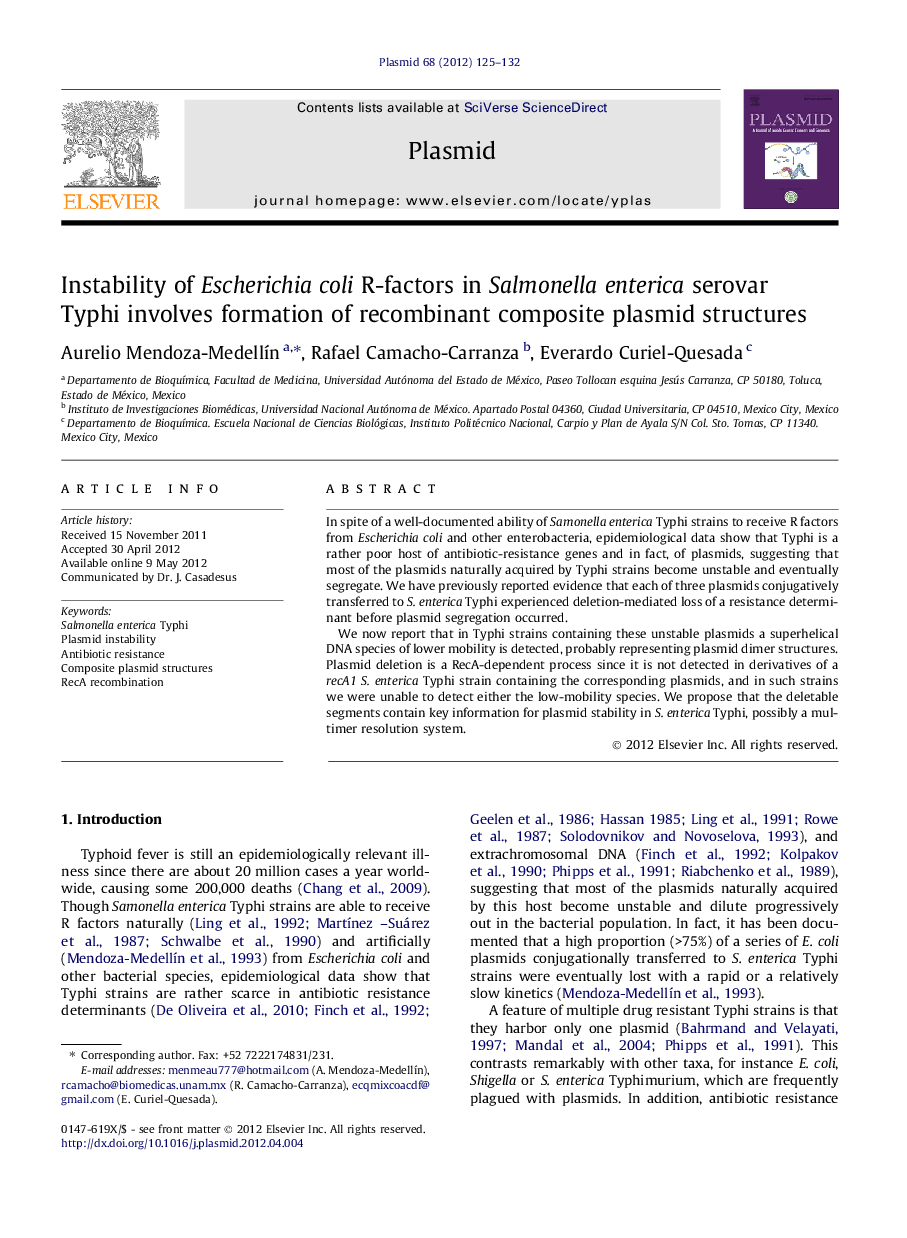| Article ID | Journal | Published Year | Pages | File Type |
|---|---|---|---|---|
| 2824219 | Plasmid | 2012 | 8 Pages |
In spite of a well-documented ability of Samonella enterica Typhi strains to receive R factors from Escherichia coli and other enterobacteria, epidemiological data show that Typhi is a rather poor host of antibiotic-resistance genes and in fact, of plasmids, suggesting that most of the plasmids naturally acquired by Typhi strains become unstable and eventually segregate. We have previously reported evidence that each of three plasmids conjugatively transferred to S. enterica Typhi experienced deletion-mediated loss of a resistance determinant before plasmid segregation occurred.We now report that in Typhi strains containing these unstable plasmids a superhelical DNA species of lower mobility is detected, probably representing plasmid dimer structures. Plasmid deletion is a RecA-dependent process since it is not detected in derivatives of a recA1 S. enterica Typhi strain containing the corresponding plasmids, and in such strains we were unable to detect either the low-mobility species. We propose that the deletable segments contain key information for plasmid stability in S. enterica Typhi, possibly a multimer resolution system.
► This manuscript describes the formation of oligomers as a possible cause of plasmid loss in Samonella enterica Typhi. ► Plasmid loss starts with a deletion that presumably leads to plasmid instability. ► The deleted segment probably carries a multimer resolution system since plasmid dimer accumulation occurs after deletion. ► Deletions involve RecA protein since they do not occur in a recA minus background. ► This mechanism might be related to the documented instability of plasmids in S. enterica Typhi.
